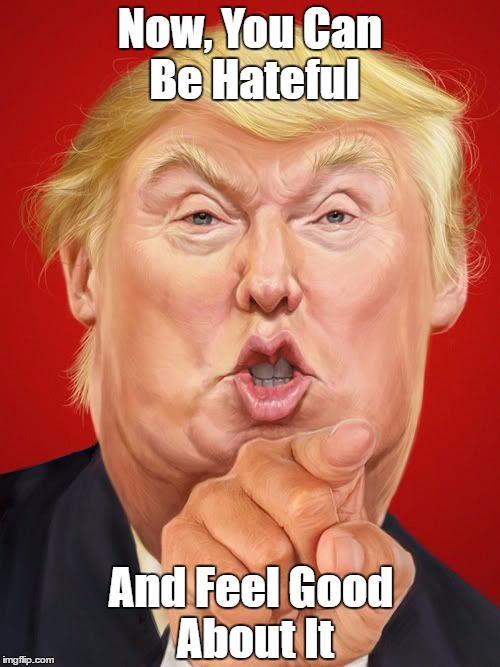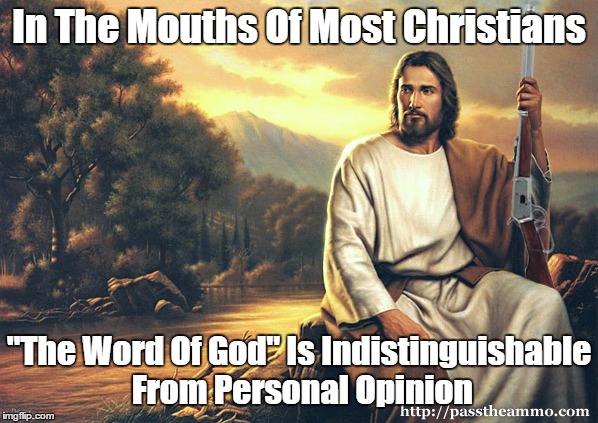It was among the most jarring scenes of the Capitol invasion, on January 6th. As rioters milled about on the Senate floor, a long-haired man in a red ski cap bellowed, from the dais, “Jesus Christ, we invoke your name!” A man to his right––the so-called QAnon Shaman, wearing a fur hat and bull horns atop his head, and holding an American flag—raised a megaphone and began to pray. Others in the chamber bowed their heads. “Thank you, heavenly Father, for being the inspiration needed to these police officers to allow us into the building, to allow us to exercise our rights, to allow us to send a message to all the tyrants, the Communists, and the globalists, that this is our nation, not theirs, that we will not allow the America, the American way of the United States of America, to go down,” he said. “Thank you, divine, omniscient, omnipotent, and omnipresent creator God for filling this chamber with your white light and love, your white light of harmony. Thank you for filling this chamber with patriots that love you and love Christ.”
Falsehoods about a stolen election, retailed by Donald Trump and his allies, drove the Capitol invasion, but distorted visions of Christianity suffused it. One group carried a large wooden cross; there were banners that read “In God We Trust,” “Jesus Is My Savior / Trump Is My President,” and “Make America Godly Again”; some marchers blew shofars, ritual instruments made from ram’s horns that have become popular in certain conservative Christian circles, owing to its resonance with an account in the Book of Joshua in which Israelites sounded their trumpets and the walls of Jericho came tumbling down. The intermingling of religious faith, conspiratorial thinking, and misguided nationalism on display at the Capitol offered perhaps the most unequivocal evidence yet of the American church’s role in bringing the country to this dangerous moment.
A recent survey, conducted by the American Enterprise Institute, found that more than a quarter of white evangelicals believe that Donald Trump has been secretly battling “a group of child sex traffickers that include prominent Democrats and Hollywood elites,” a core tenet of the QAnon conspiracy theory. The data suggest a faith-based reality divide emerging within the Republican Party: nearly three-quarters of white evangelical Republicans believe widespread voter fraud took place in the 2020 election, compared with fifty-four per cent of non-evangelical Republicans; sixty per cent of white evangelical Republicans believe that Antifa, the antifascist group, was mostly responsible for the violence in the Capitol riot, compared with forty-two per cent of non-evangelical Republicans. Other surveys have found that white evangelicals are much more skeptical of the covid-19 vaccine and are less likely than other Americans to get it, potentially jeopardizing the country’s recovery from the pandemic.
How did the church in America––particularly, its white Protestant evangelical manifestation––end up here? For many skeptics, the explanation seems obvious: faith and reason are antipodes––the former necessarily cancels out the latter, and vice versa. Cultivating the life of the mind, however, has been an important current throughout much of Christianity’s history, a recognition that intellectual pursuits can glorify God. During the Middle Ages, monasteries became centers of learning and gave rise to the first European universities. The writings of Thomas Aquinas, which blended Aristotelian philosophy and Christian theology, set out a framework for reconciling scientific knowledge with scriptural truths. Martin Luther, who led the Protestant Reformation, was an early advocate of universal education and argued that educating needy youth was vital “in order that a city might enjoy temporal peace and prosperity.” The Puritan minister Jonathan Edwards grappled with metaphysics and epistemology in his writings and sermons. In the twentieth century, C. S. Lewis and Reinhold Niebuhr enjoyed popular acclaim as Christian public intellectuals. T. S. Eliot and W. H. Auden are among the writers whose theologically orthodox Christianity served as a focal point of their art.
Evangelicalism in America, however, has come to be defined by its anti-intellectualism. The style of the most popular and influential pastors tend to correlate with shallowness: charisma trumps expertise; scientific authority is often viewed with suspicion. So it is of little surprise that American evangelicals have become vulnerable to demagoguery and misinformation. In a classic study, “Anti-Intellectualism in American Life,” the historian Richard Hofstadter, writing in the nineteen-sixties, during the aftermath of the excesses of McCarthyism, examined certain attitudes and ideas in the United States that had converged to produce a “resentment and suspicion of the life of the mind and of those who are considered to represent it.” He saw American evangelicalism as a chief culprit. In 1994, Mark Noll, a historian who was then a professor at Wheaton College in Illinois, the preëminent evangelical liberal-arts institution, published “The Scandal of the Evangelical Mind.” In the opening sentence of the book’s first chapter, he writes, “The scandal of the evangelical mind is there is not much of an evangelical mind.”
Both Hofstadter and Noll, who is an evangelical, point to peculiarities in how Christianity took root in America. The English Puritans who settled throughout New England had a deep scholarly tradition, which led to the founding of Harvard, Yale, and Dartmouth. Puritan clergy were expected to be paragons of both learning and piety. American Christianity took a decisive shift, however, toward religious “enthusiasm,” as Hofstadter puts it, during revivals that swept the colonies in the mid-eighteenth century, a period that came to be known as the First Great Awakening. Believers’ direct connection to God became the primary focus. Ministers who believed in the importance of learning and rationality in religion found themselves increasingly under threat. “The awakeners were not the first to disparage the virtues of mind, but they quickened anti-intellectualism; and they gave to American anti-intellectualism its first brief moment of militant success,” Hofstadter writes. The revivalism, which arose in New England and the mid-Atlantic colonies and then spread to the South and West, helped lead to explosive growth for the church. But it also elevated a certain kind of charismatic leader. “The Puritan ideal of the minister as an intellectual and educational leader was steadily weakened in the face of the evangelical ideal of the minister as a popular crusader and exhorter,” Hofstadter writes. Revivalism changed the nature of Protestant Christianity. Religious faith became more individualistic and less tethered to institutional authority; immediate experience took priority over tradition. A marketplace of religion took shape in America, and winning over converts took precedence, which meant “very little time or energy was available to think about God and nature, God and society, God and beauty, or God and the shape of the human mind,” Noll writes.
The comity between faith and scientific rationality that had previously existed began to fracture after the Civil War. The church found itself increasingly at odds with advances in science and also new understandings of the Bible, which came from scholars drawing on history, philosophy, and literary criticism to understand passages and the intentions and assumptions of the authors behind them. The social milieu was changing, as well, with immigration and industrialization transforming the country. “When Christians turned to their intellectual resources for dealing with these matters, they found the cupboard was nearly bare,” Noll writes. “Scripture, they believed, still had the answers to all of life’s problems––but what were they? Who had been spending time thinking about these kinds of social and intellectual problems? Who had been devoting the energy to these issues that had been devoted to evangelism? The sad answer is that almost no one had been engaged in such a process of consistent Christian thinking.”
The social and intellectual upheaval of the late nineteenth century eventually led to a rupture in Protestantism. Some drifted toward theological liberalism, rejecting historically orthodox beliefs about Jesus’s birth, humanity’s need for salvation, and other supernatural parts of the Bible; others retrenched and formed the fundamentalist movement. Crucially, fundamentalists came to embrace a number of theological innovations that were previously not at all central to Christian orthodoxy, including premillennial dispensationalism––a focus on biblical prophecies as a road map to different epochs in history and, in particular, the coming of the end times––and a simplistic, literal approach to the Bible. The “plain reading” method of interpretation ignored the cultural and historical context in which biblical authors were writing, and encouraged believers to apply a misguided, quasi-scientific approach to Bible verses, treating them as “pieces in a jigsaw puzzle that needed only to be sorted and then fit together,” as Noll writes. Biblical inerrancy, which Noll points out had never before occupied such a central place in any Christian movement, became foundational. Fundamentalists also believed that they needed to separate themselves from an increasingly secular society. All of this had a dampening effect on Christian thinking about the world: there was little need to pay attention to history, global affairs, and science, because the present epoch would soon pass, ushering in Jesus’s return; saving souls was all that mattered. “Evangelicals pushed analysis away from the visible present to the invisible future,” Noll writes. “Under these influences, evangelicals almost totally replaced respect for creation with a contemplation of redemption.”
The modern evangelical movement emerged as a response to fundamentalism, particularly its lack of engagement with the social problems of the day. The evangelist Billy Graham and other conservative Protestant leaders aspired to a more culturally engaged brand of Christianity that disavowed fundamentalism’s separatism but maintained a commitment to historic Christian creeds. They called their effort New Evangelicalism. The movement, which began to take shape in the late nineteen-forties, came to displace mainline Protestantism as the dominant religious force in the United States. But fundamentalism’s habits of mind lingered, like an undertow. “Evangelicals in the late twentieth century still follow a pathway defined at the start of the twentieth century,” Noll writes. In Noll’s assessment, there have been some notable gains in the intellectual life of evangelicals––he points to, for instance, a small cadre of evangelical scholars working in history, philosophy, sociology, religion, and other fields at top academic institutions––but he characterizes the improvement as provisional and largely in spite of the movement, rather than stemming from it. He suggests that evangelicals interested in glorifying God through their thought might be forced to draw on ideas from other traditions––mainline Protestantism, Roman Catholicism, or perhaps Eastern Orthodoxy. “The scandal of the evangelical mind seems to be that no mind arises from evangelicalism,” Noll writes.
During the Trump era, it became clear that the wasting of the evangelical mind could even have dire consequences on American democracy. For Christian thinking to flourish, Noll argues that evangelicals must be willing to exchange some of the cultural and theological ornamentation that mark their movement for what is truly indispensable. “Much of what is distinctive about American evangelicalism is not essential to Christianity,” he writes. Instead of obsessing over biblical inerrancy, evangelicals should understand the Bible as “pointing us to the Savior” and “orienting our entire existence to the service of God.” Rather than focusing solely on evangelism, evangelicals should realize that gratitude to God can engender an array of other praiseworthy responses. And, in place of a belief that a life devoted to God must begin with a sudden, life-changing religious experience, evangelicals should understand that it can unfold in a more gradual process. “To confuse the distinctive with the essential is to compromise the life-transforming character of Christian faith,” Noll writes. “It is also to compromise the renewal of the Christian mind.”
Recently, some pastors and other evangelical leaders have begun to express alarm at how unmoored some members of their congregations have become. More leaders in the American church need to recognize the emergency, but, in order for evangelicals to rescue the life of the mind in their midst, they need to acknowledge that the church is missing a vital aspect of worshipping God: understanding the world He made.
Michael Luo is the editor of newyorker.com.
Fr. Thomas Merton Explains -- In 16 Words -- Why "Christian" "Conservatives" Are Always Wrong
Billy Graham's Flagship Publication, "Christianity Today," Decries QAnon As "Demonic" And "A Great Threat To The American Church" Preaching "Predatory Drivel" - "A Wolf In Wolf's Clothing"
Thomas Aquinas: "The Greatest Kindness One Can Render To Any Man Consists In Leading Him From Error To Truth"
"Daniel Webster Prompts A Review Of Conspiracism And Its Destructive Role In American Politics"
Online Conversation With A White, Conservative Christian Concerning Trump's Family Separation Policy
Compendium Of Best "Pax-Barbaria" Posts About Trump-Cult Cruelty
"Cruelty Is The Point": An Update On Donald Trump And His White "Christian" Base
The Monstrous Cruelty Of Family Separation, A Heinous "Crime Against Humanity"
https://newsfrombarbaria.
"Family Separation And The Satanic Cruelty Of Most Republicans"
Compendium Of Trump Videos That Reveal His Arrogance, Inhumanity, Stupidity And Cruelty
George Conway Chokes Up Explaining The Moment He Realized Trump Was A Full-Throttle Racist
Trump's Long History Of Inciting Violence And The Deadly Outcome Of His Inflammatory Rhetoric
"Vote Out Hate": Political Ad Focuses Trump's Hatred And Passion For Violence
A Comprehensive Review Of Trump's Racism (Featuring "Must-See" Mash-Up Of Trump's Racist Preaching)
"The Hard, Central Truth Of Contemporary Conservatism"
Compendium Of Best "Pax-Barbaria" Posts About Trump-Cult Cruelty
"Cruelty Is The Point": An Update On Donald Trump And His White "Christian" Base
The Monstrous Cruelty Of Family Separation, A Heinous "Crime Against Humanity"
https://newsfrombarbaria.
"Family Separation And The Satanic Cruelty Of Most Republicans"
Compendium Of Trump Videos That Reveal His Arrogance, Inhumanity, Stupidity And Cruelty
"The Love Of Money Is The Root Of All Evil" - An Open Invitation To Christian Conservatives





No comments:
Post a Comment